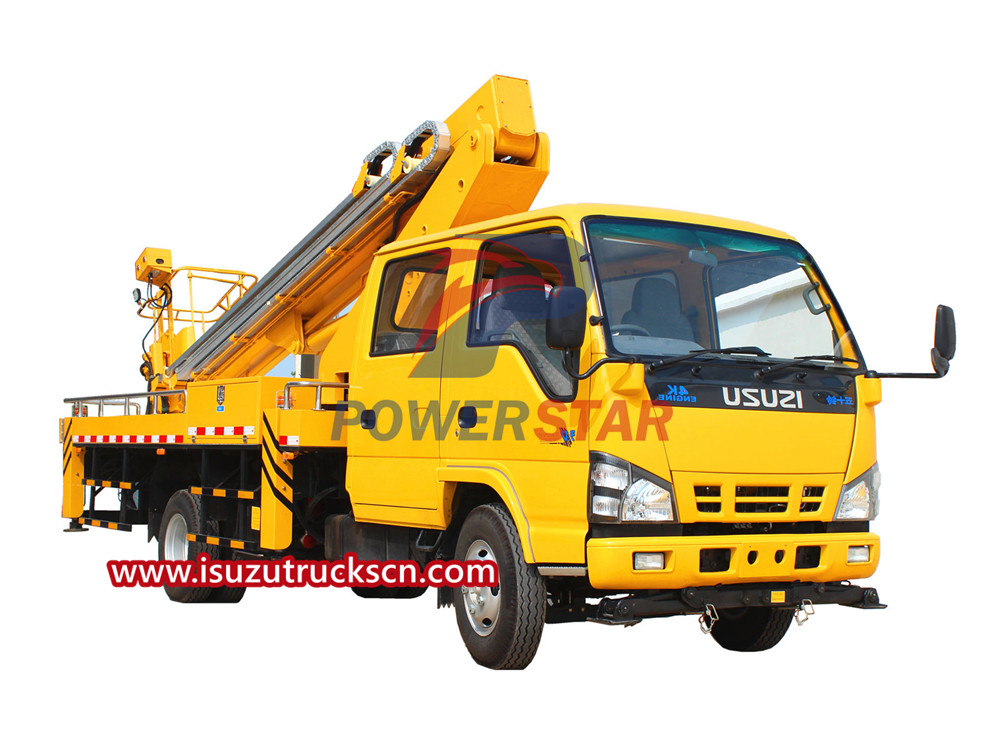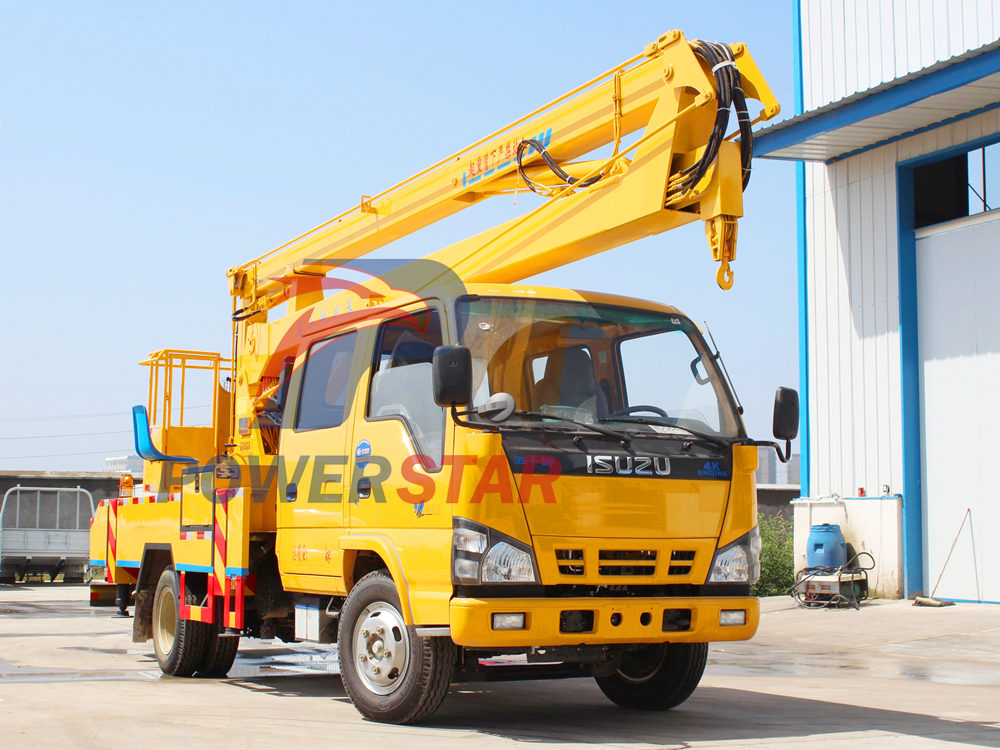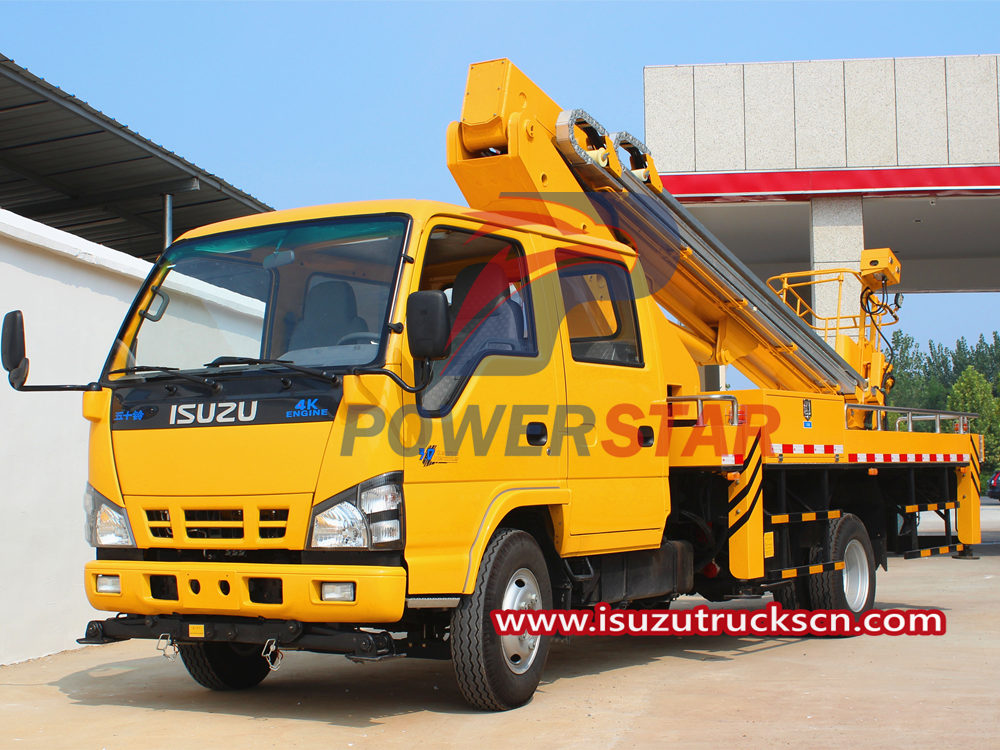


The working environment of Isuzu aerial work vehicles is extremely harsh, and heavy machinery and equipment are exposed to high altitudes and harsh weather conditions for a long time. Regular inspection and maintenance of your Isuzu aerial work truck ensures that it is always in good working order and capable of operating efficiently. Regular maintenance can effectively extend the service life of Isuzu aerial work vehicles. Not only mechanical components, but also hydraulic systems, electrical systems and other aspects require careful inspection and maintenance. Only through regular maintenance can potential faults and wear of the Isuzu aerial work vehicle be discovered in time, replaced and repaired in time to avoid further damage and accidents.
Today, let’s first discuss the maintenance steps of the Isuzu aerial work vehicle cab:
A. Before turning over the cab, stop the engine and lower the protective device on the bumper. To ensure safety, clear the front range of the cab and the gear lever.
B. Flip forward:
1. Place the gear lever in neutral.
2. Shorten the cab and unlock the locking mechanism behind the driver's seat and assistant's seat. Long cab, unlock the locking mechanism behind the driver's seat.
3. Make sure to close the doors on both sides and the front protective guardrail.
4. Move the hydraulic valve stem in the turning direction.
5. Act on the hydraulic pump until the cab flips to the most appropriate position.
Note: If the hydraulic cab tilting device is faulty, or is not installed, remove the gear lever from the transmission and use external auxiliary equipment to tilt the cab (a crane).

C. Turn back to the driving position:
1. Move the hydraulic pump valve stem in the turning direction.
2. Act on the hydraulic pump until the cab flips back to the driving position.
Note: For short cabs, the rubber pad must be placed accurately at the contact point between the fender and the frame. If necessary, correct the rubber pads. For long cabs, apply the hydraulic pump continuously until you feel a lot of resistance.
3. Short cab, locking mechanism behind the driver's seat and assistant's seat. For long cabs, check the position of the safety lever behind the driver's seat.
4. Press the shift lever forward until the shift lever engages.
Note: When the aerial platform truck is working, the valve stem on the cab flip pump must point in the driving direction. If you feel no resistance when operating the cab tilt pump: Check whether there is sufficient oil in the cab tilt pump. If you feel a lot of resistance when operating the cab flip pump.

D. Lubricate the flip-up cab bearings:Use multi-purpose grease regularly. When lubricating, turn the cab forward. Check that the cab lock is released and that the valve stem on the cab flip pump points in the desired flip direction.





